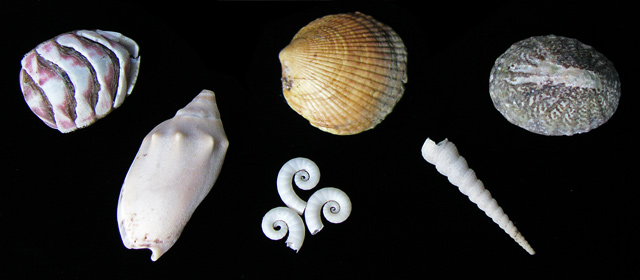He korero whakarapopoto
What are shellfish?
For most people, shellfish means seafood such as mussels or pāua. But there are many more creatures in this group. You can see limpets and sea snails in rock pools. Some species are quite rare, and some don’t even have shells.
A few familiar seafoods with a shell – such as prawns and crayfish – are not actually shellfish. True shellfish belong to the mollusc group.
Molluscs
There are over 80,000 species of mollusc. They have a soft body and a muscular foot, or tentacles, for moving around or gripping. Many have a radula – a toothed tongue for scraping food. Not all live inside a shell: sea slugs, squid and octopus are also molluscs.
New Zealand shellfish
New Zealand has over 3,660 species of shellfish (molluscs) – from microscopic sea snails to giant mussels. Many are not found anywhere else in the world.
Sea snails
The common sea snail has tentacles and eyes, and eats seaweed. Those with a shell that tapers at each end, like whelks, eat other molluscs. For protection, some have a tiny lid over the shell opening. Other species include pāua, and the violet snail, which floats upside down.
Sea slugs
Sea slugs have no shell. There are two types:
- Nudibranchs have feathery gills for breathing, and eat sponges and sea squirts. They contain nasty chemicals to frighten predators.
- Sea hares have big tentacles, and graze on seaweed. They squirt a poisonous purple dye, and lay eggs that look like spaghetti.
Bivalve molluscs
This group includes mussels, oysters and pipi. ‘Bivalve’ refers to their two hinged shells. New Zealand has over 430 species. Pipi and cockles live on the sandy sea floor, while oysters and mussels are anchored to rocks. Burrowing bivalves tunnel into the sea floor with their foot. Other species bore a hole into the rocks.
Food and other uses
Māori have always eaten shellfish such as toheroa, tuatua and pipi. They used the shells for fish hooks or decoration, and made trumpets from a giant snail shell.
- Craftspeople use pāua in jewellery designs.
- Oysters and mussels are farmed commercially.
- Collectors photograph and study unusual shells.





